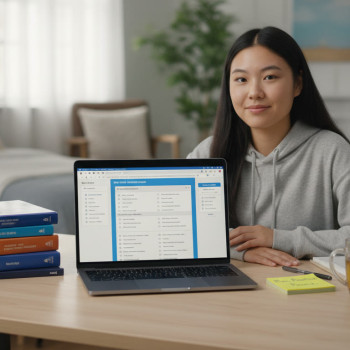Why parents should care about free AP resources
Take a breath. If your teenager is thinking about Advanced Placement (AP) classes or exams, you’re not alone in feeling both proud and a little daunted. AP courses are college-level experiences offered in high school that can give students confidence, college credit, and a sense of academic direction. The great news is you don’t have to spend a fortune—or become a curriculum expert—to help your child succeed. There are high-quality, free, open resources offered directly by College Board and related College Board programs that are designed to help students, teachers, and parents every step of the way.

What “free and open” really means for families
When we say free and open, we mean resources that are accessible without additional paywalls, often provided by the College Board itself. These include classroom tools teachers use, short instructional videos, practice questions, downloadable guides, and planning pages for parents. Many of these are designed to be used in-school, but most can also be accessed at home either through your student’s AP Classroom account or public-facing College Board pages aimed at learners and families.
These resources are especially valuable because they align closely with what students will see on the AP Exam. That alignment makes them ideal for targeted review, skill practice, and building confidence without guessing what’s “test-relevant.”
Core free College Board resources parents should know
Here’s a concise roadmap to the most useful free tools and what each one does for your student.
AP Classroom
AP Classroom is the online hub teachers use for course delivery and student practice. It contains topic-specific practice questions, progress checks, and AP Daily videos. Students join their teacher’s class section using a unique join code. Many teachers assign practice sets from AP Classroom that mirror the structure of the official digital AP Exams.
AP Daily videos
Short, digestible videos led by experienced AP teachers that focus on core topics and exam skills. They’re great for targeted review (e.g., “I need a quick refresher on hypothesis testing” or “Show me how to analyze a primary source”). Because they’re concise, students can watch them between activities or as part of a short daily review loop.
BigFuture and planning tools
BigFuture has family-friendly planning resources—important for helping students map AP choices to college and career goals. If your teen hopes to use AP credit for placement or to save on tuition, BigFuture’s college planning pages provide context about how AP scores are evaluated by colleges and how AP fits into a larger admissions plan.
AP Potential
AP Potential is a free, research-driven tool schools use to identify students likely to do well on specific AP Exams based on PSAT/SAT performance. While primarily school-facing, it can benefit families indirectly: schools sometimes use AP Potential to invite students to try AP courses or to inform outreach. If your child was recommended for AP using AP Potential, it’s usually a positive signal about readiness.
Course pages and parent resources
The AP Program provides downloadable flyers, course descriptions, exam information, and guides specifically designed for parents and guardians. These documents explain benefits, workload expectations, and how to interpret AP scores—handy for summer planning or when families talk about enrollment decisions.
How to use these resources strategically (a parent playbook)
Having the resources is one thing; using them well is another. Here’s a practical, step-by-step plan parents can use with any AP student.
Step 1: Start with conversation and goals
Begin with a relaxed chat, not a performance review. Ask what your child hopes to get from taking AP classes—college credit, a challenge, stronger transcripts, or subject exploration. Their motivation should guide the choice of classes and the intensity of preparation.
Step 2: Map AP choices to college and career goals
Use BigFuture-style planning resources to look up how colleges handle AP credit for the subjects being considered. For some majors, foundational AP exams (like Calculus or Biology) may transfer to placement credit; for others, AP complements a broader admissions narrative.
Step 3: Build a study rhythm with AP Classroom materials
Ask the teacher how they use AP Classroom—are progress checks assigned? Can your student access topic questions for extra practice? Encourage short, regular review blocks (20–40 minutes) rather than marathon sessions. Frequent retrieval practice beats cramming.
Step 4: Use AP Daily videos as micro-lessons
Turn videos into active learning: watch for 10–15 minutes, pause, and have the student summarize the key idea in one or two sentences. Then ask them to create a single practice question or explain how they would solve a sample problem. That active step is where the learning sticks.
Step 5: Practice under test-like conditions
Ask whether your student’s teacher assigns digital practice sets or full-length practice tasks. Work with the teacher to identify a few timed practice sessions that simulate exam conditions—same time limits, minimal interruptions—so students learn pacing and exam stamina.
Sample weekly schedule for AP study (practical, sustainable)
Here’s a sample weekly rhythm that keeps review steady without burning students out. Adapt times around sports, jobs, and family obligations.
- Monday: 30 minutes — AP Daily video + 10 minutes of notes
- Tuesday: 40 minutes — Topic questions from AP Classroom (timed)
- Wednesday: 30 minutes — Group study or one-on-one review with teacher/tutor
- Thursday: 40 minutes — Progress Check or practice set
- Friday: 20 minutes — Flash review or concept quiz
- Weekend: 60–90 minutes — Full practice set or cumulative review
Table: Quick comparison of free College Board resources
| Resource | Best for | How parents can help |
|---|---|---|
| AP Classroom | Targeted practice, progress checks | Ask teacher about assigned practice; encourage regular use |
| AP Daily videos | Short topic refreshers and explanations | Watch with student occasionally and ask them to teach back |
| BigFuture | College planning and AP credit context | Use it for conversations about AP’s role in college plans |
| AP Potential | Identifying readiness for particular AP courses | Talk with counselors if your child received an AP Potential recommendation |
| Parent flyers and guides | Quick overviews and expectations | Print summaries to keep on the fridge for planning |
How to support learning without doing the work for them
The line between support and take-over can be thin. The most effective parenting strategies focus on creating structure, resources, and emotional support—not on re-teaching content. Here are practical ideas:
- Designate a consistent study spot that’s comfortable, well-lit, and low-distraction.
- Help them build a calendar with realistic micro-deadlines for assignments and practice tests.
- Teach basic metacognitive check-ins: What did you learn today? What’s still fuzzy?
- Encourage retrieval practice—quizzing yourself beats re-reading notes.
- Celebrate effort and strategy, not just scores: praise a new study routine or use of practice checks.
Addressing stress, motivation, and balance
AP seasons can be stressful, especially as exams approach. Parents can help by normalizing the pressure and offering concrete tools:
- Encourage short, frequent breaks—5–10 minutes every 25–45 minutes helps focus and reduces mental fatigue.
- Support sleep hygiene: consistent bedtimes and unplugging screens before sleep make a measurable difference in memory and concentration.
- Help them prioritize—if multiple APs are on the schedule, focus on high-impact study targets (exam format, recurring problem types, and weak topics).
- Model stress-management: deep breathing, brief walks, or a short chat can reset perspective on a tough study day.
When to consider extra help: tutoring and targeted coaching
Not every student will need outside tutoring, but when gaps in understanding or time constraints exist, targeted support can accelerate progress. If you consider tutoring, prioritize:
- 1-on-1 guidance with a tutor who has verified AP experience in that subject.
- Tailored study plans that focus on the student’s specific weaknesses rather than generic lessons.
- Regular progress checks—tutors who assign practice sets and report measurable improvements are most effective.
Programs that combine expert tutors with data-driven insights can be particularly helpful: they create focused plans that use high-quality free College Board materials for practice and review. If you decide to bring in tutoring, look for partnerships that integrate smoothly with the school’s AP Classroom workflow so practice aligns with classroom expectations.
Sample parent-teacher checklist for AP success
Use this checklist when you meet a student’s AP teacher or counselor:
- Ask which AP Classroom assignments will be used for practice and how parents can best support study routines at home.
- Request a pacing guide or syllabus so your family calendar can accommodate key unit tests and progress checks.
- Ask about access to AP Daily videos and whether specific videos are planned for review before exams.
- Clarify registration deadlines for AP Exams and school procedures for signing up.
- Discuss any recommended practice tests and how they’ll be scheduled—knowing the plan reduces last-minute anxiety.
Real-world examples and parent stories (what works)
Here are a few concise, composite examples of approaches that families have found effective:
- Emma, a sophomore taking AP World History, used a consistent nightly 30-minute block: AP Daily video + one set of topic questions. Her parents helped by keeping evening routines predictable and making Sunday a catch-up day. The steady rhythm reduced last-minute panic before the exam.
- Jamal balanced sports and AP Calculus by scheduling two 45-minute focused study sessions per week with his coach and one weekly 90-minute digital practice test. His parents arranged transportation around practice so he could preserve study windows.
- Amanda struggled with AP Chemistry until a targeted tutor broke topics into three-week modules keyed to AP Classroom progress checks. The tutor used College Board-style practice questions and helped Amanda build confidence with timed problem sets.
Making the most of free resources in the months before the exam
As exam day approaches, shift from learning new material to targeted review and exam strategy:
- Use AP Classroom progress checks to identify persistent weak spots.
- Have students watch AP Daily videos that focus on those weak spots and immediately practice related topic questions.
- Simulate at least one full-length practice session under exam conditions to build pacing skills.
- Prioritize sleep and a consistent daily routine in the final two weeks—cognitive performance depends heavily on rest.
Checklist: What parents should have in place 6 weeks before the AP Exam
| Task | Why it matters |
|---|---|
| Confirm exam registration | Avoids last-minute surprises and extra fees |
| Gather AP Classroom usernames and join codes | Ensures access to official practice and videos |
| Schedule full-length practice test | Builds pacing and stamina |
| Plan daily short review blocks | Promotes consistent retrieval and reduces anxiety |
| Talk to teacher about final review topics | Keeps review aligned with what will appear on the exam |
How to talk about scores, college credit, and next steps
AP scores can translate into college credit, advanced placement in courses, or simply stronger preparation for college-level work. Colleges have different policies regarding AP credit—some award credit for scores of 3 or higher, others require 4 or 5 for credit in major-specific courses. Use BigFuture resources and each college’s policy pages to make informed choices about which exams are strategic to prioritize.
Above all, encourage your student to view AP as preparation, not simply a ticket to credit. The skills developed—analysis, problem-solving, written argumentation—pay dividends in college and beyond.
Closing thoughts: You’re part of the team
Raising an AP student can feel like juggling many roles: cheerleader, planner, logistics manager, and emotional anchor. The free, high-quality tools provided by the AP Program are designed to partner with families and teachers so students can focus on learning. By using AP Classroom, AP Daily videos, BigFuture planning pages, and taking advantage of school outreach tools like AP Potential, you can build a calm, confident path forward.
If your child needs targeted, personalized support, consider options that provide 1-on-1 guidance, tailored study plans, and expert tutors who can align their work with AP Classroom materials—this ensures tutoring is efficient and directly tied to what the exam will ask. Some tutoring services also use data and AI-driven insights to spot gaps and track progress, which can be a powerful complement to the free resources your family already uses.

Quick reference: Where to start this week
- Ask your student for their AP Classroom join code and confirm they can access topic questions and AP Daily videos.
- Print or save a one-page syllabus from the teacher and place key dates on the family calendar.
- Schedule one timed practice session and one short daily review block for the coming week.
- Set one non-academic goal—sleep, short walk, or a family break—to support well-being during study weeks.
Final encouragement
You don’t need to be an expert to be effective. Small, steady actions—consistent study windows, targeted practice, good sleep, and aligned use of free College Board resources—make massive differences in outcomes. Keep the conversation open, celebrate progress, and lean on the free tools and school staff who are there to help. With the right plan and a steady approach, your student can turn AP courses into a springboard for success—without turning the family into a test-prep factory.
Parents who combine thoughtful planning with the wealth of free resources available will often see not just better scores but a more confident, resilient student. That’s the real win.























No Comments
Leave a comment Cancel